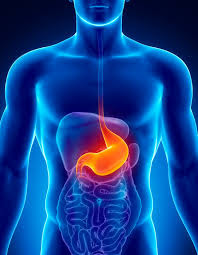
NCP for Psoriasis - 4 Nursing Diagnosis
Nursing Care Plan for Psoriasis
Psoriasis is a skin disease whose sufferers experience skin replacement process is too fast. The emergence of this disease sometimes for a longer period. In contrast to the normal human skin changes that usually lasts for three to four weeks, the skin changes in patients with psoriasis take place quickly is about 2-4 days, (it can even happen faster) that a lot of skin cell turnover and thickened.
Psoriasis can be found in all parts of the world with morbidity (incidence rate) is different. In terms of age, Psoriasis can be at any age, but usually more often found in adults.
Psoriasis is a skin disorder characterized by plaque, patches, scaly known papulosquamous disease. (Price, 1994).
The cause of psoriasis is unknown until now. Allegedly inherited polygenic. Although the majority of patients with psoriasis arises spontaneously, but in some patients found the existence of precipitating factors, among others:
1) Trauma
Psoriasis first arise in places that are exposed to trauma, scratching, incision, a former vaccination, and so on. The likelihood that this is a mechanism Koebner phenomenon. Typical in psoriasis arises 7-14 days after trauma.
2) Infection
In children, especially hemolytic streptococcal infections often cause guttate psoriasis. Psoriasis also arise after other bacterial infection and certain viral infections, but disappeared after infection healed.
3) Climate
Some cases tend to heal in the summer, while in the rainy season will recur.
4) Endocrine factors
The highest incidence at puberty and menopause. Psoriasis tends to improve during pregnancy and relapse and resistance to treatment after birth. Sometimes generalized pustular psoriasis arise during pregnancy and after high-dose progesterone treatment.
5) Sunlight
Although sunlight generally useful for patients with psoriasis, but in some patients the strong sunlight can stimulate the onset of psoriasis. Photochemical treatment has similar effects in some patients.
6) Metabolic
Hypocalcemia may cause psoriasis.
Patients usually complain of mild itching in places of predilection, namely the scalp, the border area with the face, extremities on the extensor, especially the elbows and knees, and the lumbosacral region. Skin disorders consisting of patches of elevated erythema (plaque) with scales on it. The scales are layered, rough, and white like mica, and transparent. In psoriasis there is the phenomenon of droplets of wax, Auspitz and Köbner.
Symptoms of psoriasis include:
Complained of mild itching.
Patches of erythema elevated, scaly thereon.
There is a phenomenon of the droplets of wax.
Cause nail abnormalities.
Nursing Diagnosis for Psoriasis
1. Impaired sense of comfort related to disease-related symptoms
characterized by: the itching, burning sensation on the skin, anxiety, clients seemed agitated, and disruption of sleep patterns.
2. Impaired skin integrity related to chemical irritation, mechanical factors, nutritional factors
characterized by: tissue damage of the skin (scaly skin, poor skin turgor, cracks, patches, itching).
3. Disturbed body image related to the biophysical, disease, and perceptual
characterized by: insecure, self-conscious, feelings of isolation, the interaction is reduced.
4. Anxiety related to changes in health status
characterized by: a client anxiety, fear, sleep disturbances, often sweating.
Psoriasis is a skin disease whose sufferers experience skin replacement process is too fast. The emergence of this disease sometimes for a longer period. In contrast to the normal human skin changes that usually lasts for three to four weeks, the skin changes in patients with psoriasis take place quickly is about 2-4 days, (it can even happen faster) that a lot of skin cell turnover and thickened.
Psoriasis can be found in all parts of the world with morbidity (incidence rate) is different. In terms of age, Psoriasis can be at any age, but usually more often found in adults.
Psoriasis is a skin disorder characterized by plaque, patches, scaly known papulosquamous disease. (Price, 1994).
The cause of psoriasis is unknown until now. Allegedly inherited polygenic. Although the majority of patients with psoriasis arises spontaneously, but in some patients found the existence of precipitating factors, among others:
1) Trauma
Psoriasis first arise in places that are exposed to trauma, scratching, incision, a former vaccination, and so on. The likelihood that this is a mechanism Koebner phenomenon. Typical in psoriasis arises 7-14 days after trauma.
2) Infection
In children, especially hemolytic streptococcal infections often cause guttate psoriasis. Psoriasis also arise after other bacterial infection and certain viral infections, but disappeared after infection healed.
3) Climate
Some cases tend to heal in the summer, while in the rainy season will recur.
4) Endocrine factors
The highest incidence at puberty and menopause. Psoriasis tends to improve during pregnancy and relapse and resistance to treatment after birth. Sometimes generalized pustular psoriasis arise during pregnancy and after high-dose progesterone treatment.
5) Sunlight
Although sunlight generally useful for patients with psoriasis, but in some patients the strong sunlight can stimulate the onset of psoriasis. Photochemical treatment has similar effects in some patients.
6) Metabolic
Hypocalcemia may cause psoriasis.
Patients usually complain of mild itching in places of predilection, namely the scalp, the border area with the face, extremities on the extensor, especially the elbows and knees, and the lumbosacral region. Skin disorders consisting of patches of elevated erythema (plaque) with scales on it. The scales are layered, rough, and white like mica, and transparent. In psoriasis there is the phenomenon of droplets of wax, Auspitz and Köbner.
Symptoms of psoriasis include:
Complained of mild itching.
Patches of erythema elevated, scaly thereon.
There is a phenomenon of the droplets of wax.
Cause nail abnormalities.
Nursing Diagnosis for Psoriasis
1. Impaired sense of comfort related to disease-related symptoms
characterized by: the itching, burning sensation on the skin, anxiety, clients seemed agitated, and disruption of sleep patterns.
2. Impaired skin integrity related to chemical irritation, mechanical factors, nutritional factors
characterized by: tissue damage of the skin (scaly skin, poor skin turgor, cracks, patches, itching).
3. Disturbed body image related to the biophysical, disease, and perceptual
characterized by: insecure, self-conscious, feelings of isolation, the interaction is reduced.
4. Anxiety related to changes in health status
characterized by: a client anxiety, fear, sleep disturbances, often sweating.
























